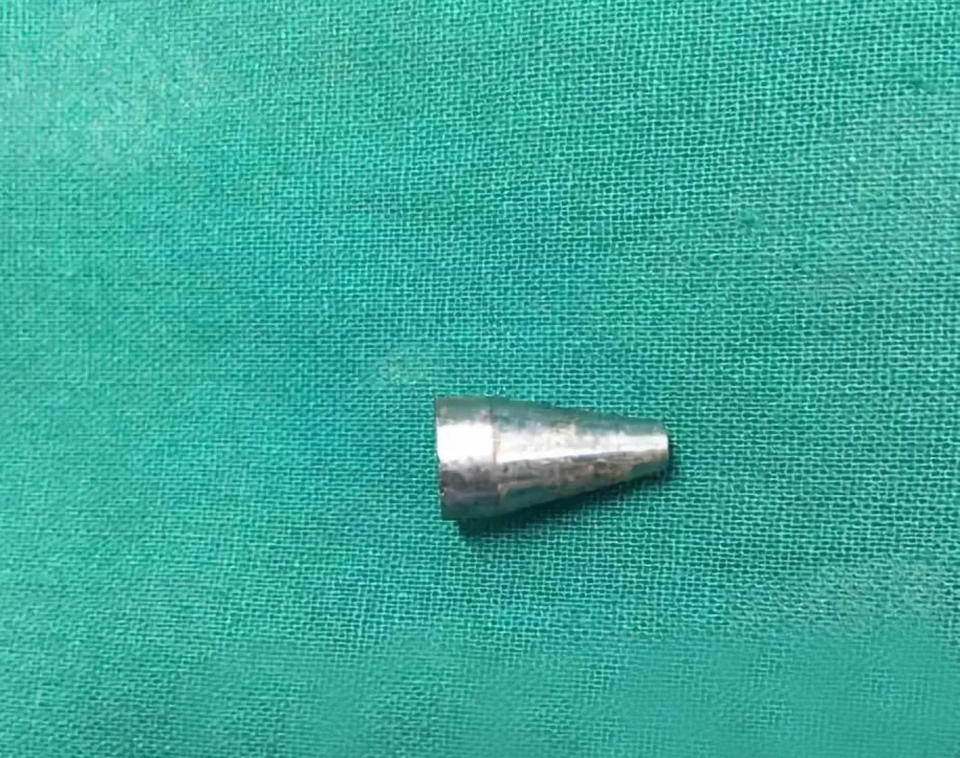Shocking truth behind girl’s unusual whistle
Doctors baffled by the unusual ‘whistling’ sounds being made by a schoolgirl every time she breathed discovered it was being caused by a plastic pen tip that had lodged in her throat.
The parents of Chen Xiaohui, 9, took her to hospital in China after she would not stop coughing for a week.
Dr Guo Jialong, who examined the schoolgirl, found that she would make bizarre ‘whistling’ noises whenever she breathed in or out.
He suspected there was a foreign body in her airways, and scans proved his diagnosis correct when a cone-shaped object appeared in her right bronchus.
It was only after further questioning that the girl finally revealed she had accidentally swallowed the plastic tip of the pen she was chewing while doing homework.

She immediately began suffering a coughing fit but was too afraid to tell her parents the truth about what had happened.
Dr Guo, who is the hospital’s cardiothoracic surgeon, supposed the girl was still able to breathe thanks to the hole at the top of the cone-shaped pen tip.
However, the foreign body had caused inflammation and needed to be urgently removed.
The medic and his team retrieved the girl’s pen cap in a minimally invasive endoscopic surgery which the doctors said was “very successful”.

The girl is continuing her post-operative treatment but is expected to make a full recovery.
“It’s very common to find foreign bodies in the tracheae or bronchi of young children, especially those under the age of five,” Dr Guo said.
“Parents who notice violent coughing or obstructed breathing in their children should have a diagnosis confirmed in a CT scan so the foreign body can be removed endoscopically, or, in serious cases, through surgery.”
– Australscope


